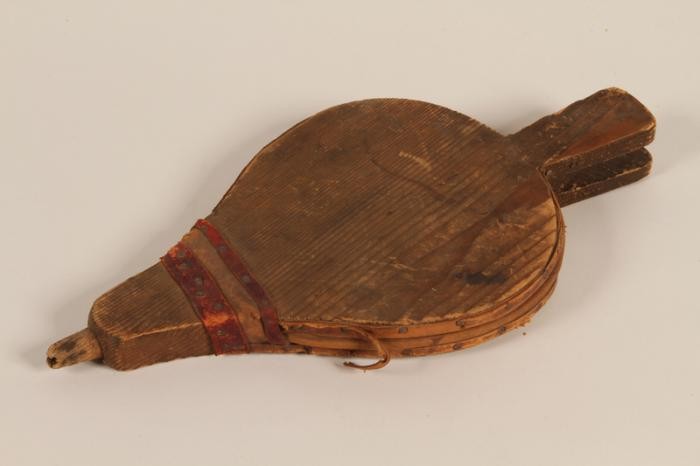![Romani (Gypsy) woman's skirt [LCID: 1998bp5q] Purple long skirt with ruffles with a slightly darker botanical pattern.](https://encyclopedia.ushmm.org/images/large/de5ff0af-3754-4ab6-8fc5-15b2b758fbde.jpg)
This taffeta and cotton skirt dates from the 1920s. It belonged to a Romani (Gypsy) woman who was born in Frankfurt, Germany, and who lived in Germany before the war. She was arrested by the Nazis and interned in the Auschwitz, Ravensbrück, Mauthausen, and Bergen-Belsen camps. She died in Bergen-Belsen in March 1945, shortly before the camp's liberation. Her husband and two of her six children were also killed in the camps.
Item View![Two Romani (Gypsy) artisans. Ploesti, Romania, 1930s. [LCID: 63366] Two Romani (Gypsy) artisans. Ploesti, Romania, 1930s. [LCID: 63366]](https://encyclopedia.ushmm.org/images/large/c3564271-8c50-4aee-a076-fbe33ed1691e.jpg)
Two Romani (Gypsy) artisans. Ploesti, Romania, 1930s.
Item View![Romani (Gypsy) women and child. Romania, 1930s. [LCID: 63360] Romani (Gypsy) women and child. Romania, 1930s. [LCID: 63360]](https://encyclopedia.ushmm.org/images/large/c1822da1-9b60-40df-ab75-cd6a2c1c2413.jpg)
Romani (Gypsy) women and child. Romania, 1930s.
Item View![A photographer with a group of nomadic Roma (Gypsies). [LCID: 60144] A photographer with a group of nomadic Roma (Gypsies). [LCID: 60144]](https://encyclopedia.ushmm.org/images/large/e999463f-49f5-4482-baa0-917f2c204b4c.jpeg)
Photographer J. Kolarcik sits with a group of nomadic Roma (Gypsies). This photograph was probably taken in Czechoslovakia, 1939.
Item ViewRoma (Gypsies) celebrate with music, dancing, and singing in the mountains near Zagreb, Yugoslavia. During World War II, Roma in Yugoslavia were exterminated by Croatian nationalists and by the Germans.
Item ViewAbout a million Roma (Gypsies) lived in Europe before World War II. The largest Romani community—of about 300,000—was in Romania. This film shows a Romani (Gypsy) community in Moreni, a small town northwest of Bucharest. Many Roma led a nomadic lifestyle and often worked as small traders, craftsmen, merchants, laborers, and muscians.
Item ViewThis film excerpt from Groß-Stadt Zigeuner (1932) by filmmaker László Moholy-Nagy shows a Romani (Gypsy) campsite near Berlin, Germany, in the last year of the Weimar Republic. Although Roma (Gypsies) had faced persecution in Germany even before the Nazi rise to power in 1933, the Nazis regarded them as racial enemies to be identified and killed. Tens of thousands of Roma were killed by the Einsatzgruppen in eastern Europe or were deported to killing centers in occupied Poland.
Item View
Violin owned by Rita Prigmore and originally used by her father, who played with his four brothers in a band in Germany before World War II. Rita and her family were members of the Sinti group of Roma (Gypsies). She and her twin sister Rolanda were born in 1943. Rolanda died as a result of medical experiments on twins in the clinic where they were born. Rita and her mother survived the war and moved to the United States, before returning to Germany to run a Sinti human rights organization that sought to raise consciousness about the fate of Roma during the Holocaust.
Item View
We would like to thank Crown Family Philanthropies, Abe and Ida Cooper Foundation, the Claims Conference, EVZ, and BMF for supporting the ongoing work to create content and resources for the Holocaust Encyclopedia. View the list of donor acknowledgement.